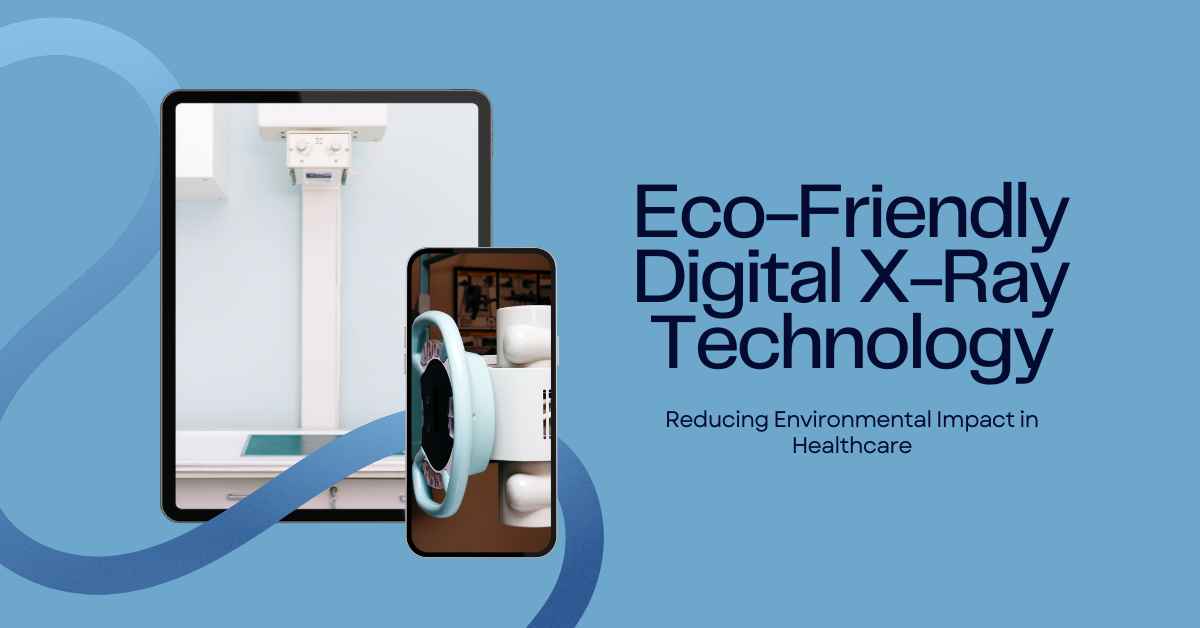In the pursuit of advancing medical diagnostics while minimizing environmental footprints, the healthcare industry is witnessing a transformative shift towards eco-friendly practices in digital X-ray technology. This shift is not just a leap in technological innovation; it’s a commitment to sustainable healthcare that benefits both patients and the planet.
The Environmental Challenge of Traditional X-Ray Systems
Traditional X-ray systems, despite their invaluable contributions to medical diagnostics, have presented significant environmental challenges. These challenges include high energy consumption, use of hazardous materials like lead in radiation shielding, and the generation of hazardous waste. As the healthcare industry becomes increasingly aware of its environmental responsibilities, the transition to greener alternatives is imperative.
Innovations in Digital X-Ray Technology
Energy-Efficient Machines
One of the most significant advancements in digital X-ray technology is the development of energy-efficient machines. These cutting-edge systems consume considerably less electricity compared to their traditional counterparts. For instance, modern digital radiography systems are designed to enter a sleep mode when not in use, drastically reducing energy consumption. Research indicates that digital X-ray systems can save up to 30% more energy than conventional X-ray systems. This not only contributes to a reduction in the carbon footprint of healthcare facilities but also translates to substantial cost savings in the long run.
Lead-Free Radiation Shielding
The traditional use of lead for radiation shielding in X-ray systems poses environmental and health risks due to its toxic nature. Innovators in the field have introduced lead-free alternatives that provide effective radiation protection without the associated hazards. Materials such as bismuth, tungsten, and barium compounds are proving to be viable substitutes, offering comparable shielding effectiveness while being non-toxic and recyclable. This shift not only mitigates the environmental impact but also enhances the safety of healthcare workers and patients.
Digital Imaging and Reduced Chemical Use
Digital X-ray technology eliminates the need for film processing, which traditionally involves the use of hazardous chemicals that can harm the environment. Digital imaging allows for instant viewing and sharing of results, significantly reducing the consumption of resources and the generation of hazardous waste. Furthermore, the enhanced accuracy and clarity of digital images reduce the need for repeat scans, thereby decreasing overall radiation exposure and contributing to patient safety.
Software Innovations
Advancements in software algorithms are enabling more efficient use of X-ray machines, optimizing radiation doses, and improving image quality. These software innovations not only contribute to better patient outcomes but also enhance the environmental sustainability of X-ray diagnostics by minimizing energy use and radiation exposure.
The Role of Ecotown Diagnostics
In Bangalore, Ecotown Diagnostics stands at the forefront of integrating eco-friendly digital X-ray technology into its services. By offering digital X-ray diagnostics, Ecotown Diagnostics not only ensures exceptional care for its patients but also aligns with sustainable healthcare practices. The facility’s commitment to leveraging advanced, environmentally responsible technologies exemplifies how healthcare providers can contribute to a healthier planet without compromising the quality of patient care.
The Global Impact and Future Prospects
The global adoption of eco-friendly digital X-ray technology holds immense potential for reducing the environmental impact of healthcare. As more facilities worldwide embrace these sustainable practices, the collective reduction in energy consumption, hazardous waste, and carbon emissions will contribute significantly to global environmental conservation efforts.
The future of digital X-ray technology promises even greater advancements, with ongoing research focused on further reducing energy consumption, enhancing recyclability, and developing even more efficient radiation shielding materials. The continuous innovation in this field is a testament to the healthcare industry’s commitment to sustainability.
Conclusion
The integration of eco-friendly practices in digital X-ray technology represents a pivotal moment in the intersection of healthcare and environmental stewardship. By embracing energy-efficient machines, lead-free radiation shielding, digital imaging, and software innovations, the healthcare industry is setting a new standard for sustainable medical diagnostics. This not only enhances patient care but also contributes to a healthier planet.
As we move forward, it’s essential for healthcare providers, patients, and policymakers to support and advocate for these sustainable practices. The journey towards eco-friendly healthcare is a collective effort that promises a brighter, healthier future for both humanity and the environment. In this era of sustainable healthcare, one must ponder: how can we further innovate to ensure the well-being of our planet while advancing medical diagnostics?








